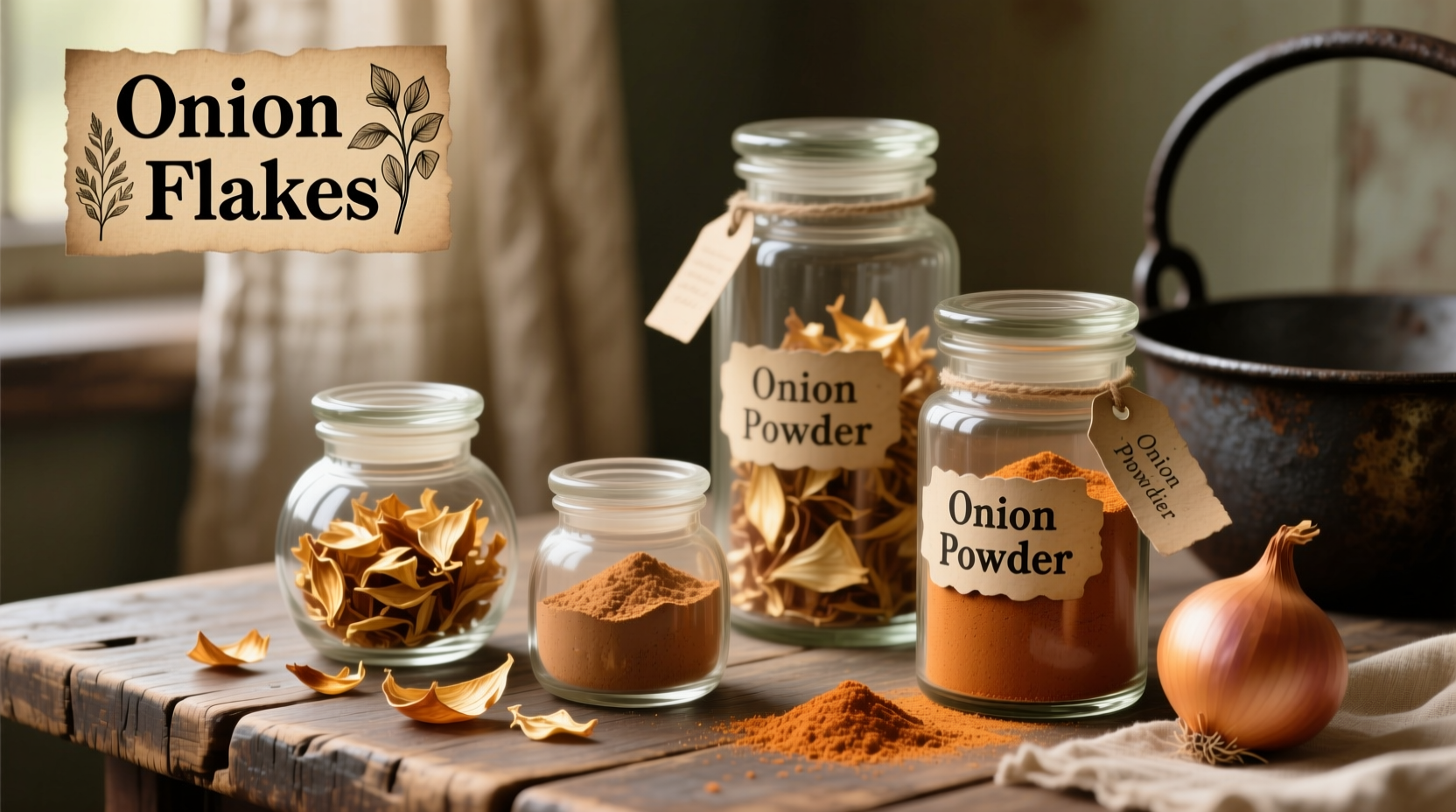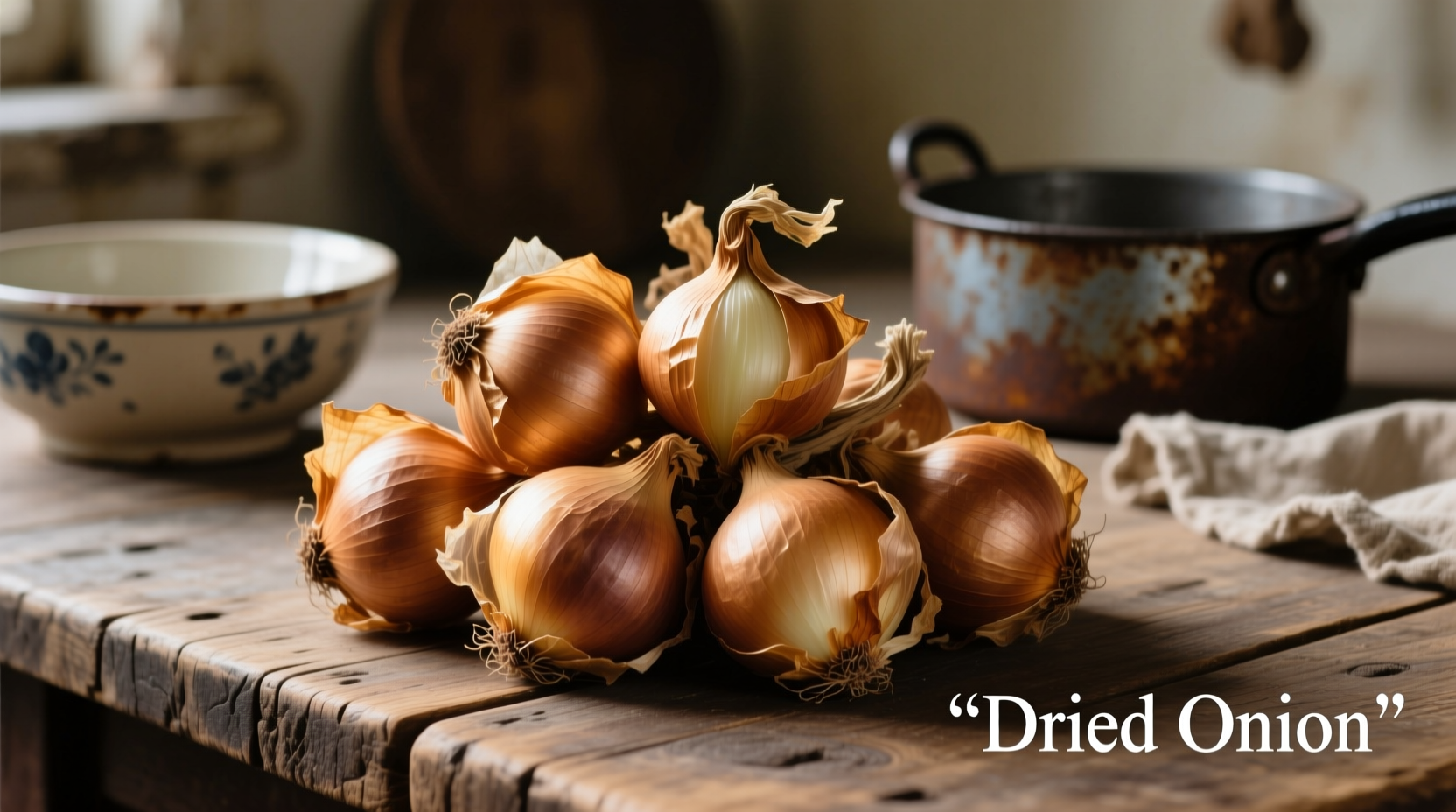What Exactly Are Dried Onions?
Dried onions transform the pungent allium into a shelf-stable powerhouse through dehydration. Unlike freeze-dried counterparts, traditional dried onions undergo controlled heat drying that concentrates their natural sugars while preserving essential flavor compounds. Professional kitchens rely on two primary forms:
- Dried onion flakes: Thinly sliced pieces retaining some texture
- Dried onion powder: Finely ground for instant dissolution
According to the National Center for Home Food Preservation, properly dried onions maintain 90% of their original flavor compounds when stored correctly. This preservation method dates back to ancient Egyptian civilizations, who recognized onions' medicinal properties and developed sun-drying techniques still used in modified form today.
| Characteristic | Fresh Onions | Dried Onions |
|---|---|---|
| Shelf Life | 1-2 months refrigerated | 12-24 months in airtight container |
| Flavor Concentration | 1x (baseline) | 3-4x more intense |
| Prep Time | 5-10 minutes chopping | Instant use |
| Nutrient Density (per 100g) | Vitamin C: 7.4mg | Vitamin C: 22mg |
Why Professional Chefs Keep Dried Onions Stocked
While fresh onions have their place, dried onions solve specific culinary challenges that frustrate home cooks. The USDA FoodData Central database confirms dried onions contain three times more concentrated flavor compounds by volume compared to fresh. This intensity translates to several practical advantages:
Consistent Flavor Without Tears
Onion pungency varies dramatically by season and storage conditions. Dried onions provide standardized flavor intensity year-round. When rehydrated properly using the 1:3 ratio (1 part dried onion to 3 parts liquid), they deliver predictable results in sauces, soups, and braises.
Extended Shelf Stability
Unlike fresh onions that spoil within weeks, properly stored dried onions maintain quality for 18-24 months. The National Center for Home Food Preservation recommends storing them in airtight containers away from light and moisture. This stability makes them ideal for emergency food supplies and meal prepping.
Precise Measurement Conversions You Need
One common mistake home cooks make is improper substitution ratios. University of Georgia Extension research shows these accurate conversions:
- 1 tablespoon dried onion flakes = ¼ cup fresh chopped onion
- 1 teaspoon onion powder = 2 tablespoons fresh minced onion
- 1 cup rehydrated dried onions = 2 cups fresh onions
When substituting in recipes, remember dried onions lack moisture content. For every ¼ cup of dried onions used, reduce other liquids by 2 tablespoons to maintain proper recipe consistency.

Optimal Storage Techniques That Preserve Flavor
Even the highest quality dried onions degrade when stored improperly. Follow these evidence-based storage methods:
- Air-tight containers: Oxygen exposure causes flavor deterioration. Glass jars with rubber seals outperform plastic containers.
- Cool, dark location: Store below 70°F (21°C) away from heat sources. Pantry storage beats cabinet near stove.
- Moisture control: Include silica gel packets to absorb ambient humidity that causes clumping.
- Freezer option: For long-term storage beyond 12 months, freeze in vacuum-sealed bags.
The USDA's Complete Guide to Home Food Preservation confirms these methods prevent the Maillard reaction that causes browning and flavor loss in dried alliums.
Three Common Mistakes to Avoid
Even experienced cooks make these errors when working with dried onions:
Skipping Rehydration for Certain Applications
While onion powder dissolves instantly, dried flakes need proper rehydration in moist dishes. Add them 15-20 minutes before dish completion to allow full flavor integration without becoming mushy.
Overheating During Cooking
Dried onions burn at lower temperatures than fresh. When sautéing, use medium-low heat and add them after other aromatics have softened.
Ignoring Flavor Development Time
Dried onions require 5-7 minutes of cooking time to fully develop their flavor profile. Adding them at the very end of cooking results in harsh, one-dimensional taste.
Simple Recipes That Shine with Dried Onions
These applications showcase dried onions' unique advantages:
Restaurant-Style Gravy in Minutes
Combine 2 tablespoons dried onion flakes, 3 tablespoons flour, 2 cups broth, and 1 teaspoon Worcestershire sauce. Simmer 10 minutes for rich, complex gravy without the 30-minute prep of fresh onions.
Perfect Burger Seasoning Blend
Mix 1 tablespoon onion powder, 2 teaspoons garlic powder, 1 teaspoon smoked paprika, and ½ teaspoon black pepper per pound of ground beef. The fine texture ensures even distribution without creating weak spots in patties.
Emergency Soup Base
Create shelf-stable soup starters by combining dried onion flakes, dried celery flakes, dried carrots, and herbs in portion-controlled bags. Add directly to broth for instant flavor depth.











 浙公网安备
33010002000092号
浙公网安备
33010002000092号 浙B2-20120091-4
浙B2-20120091-4